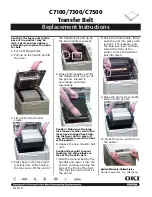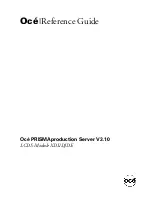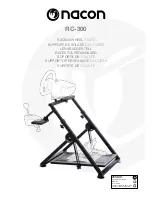
12
• Remove the setting tools or wrenches before switching on the power tool. A tool or wrench at-tached to a rotating part
of the equipment may cause injuries.
• Wear suitable clothes, i.e. no loose garments or jewellery. Keep your hair, clothing and gloves away from rotating parts.
Loose garments, jewellery or long hair may be caught by such rotating parts.
• Always use the protective hood with the dust extractor.
• Do not use power tools with a defective switch. A power tool that can no longer be switched on or off is dangerous and
needs repairing.
• Keep unused power tools out of the reach of children. Do not allow persons using equipment which they are not familiar
with it, or persons who have not read these instructions. Power tools pose a danger, when being used by inexperienced
persons.
• Check before starting to work, whether equipment and tools function properly. Never work with damaged or blunt
tools.
• Have your power tools only repaired by duly qualified personnel. Demand original spares, so that the safety of the
power tool remains ensured.
• Pull the plug from the socket and/or remove the battery pack from the power tools before you change the setting of
your equipment or before you replace any components. The unin-tentional re-start of a power tool may cause accidents.
• Put up the machine table properly before installing the power tool. The table’s safe assembly is vital to prevent it from
collapsing.
• Attach the power tool safely to the machine plate before using it. If the power tool gets out of place on the machine
plate, you may lose control of it.
• Put the machine table on a firm, plain and horizontal surface. If the machine table can shift or wobble, neither the power
tool nor the work piece can be moved safely and steadily.
• Do not overload the machine table and do not use it as ladder or scaffolding. Excess loads or standing on the machine
table can shift the table’s centre of gravity upwards, so that it may topple over.
• Do not process any other materials than wood or easily machinable plastic.
• The machines used must conform to DIN EN 60745-1. Equipment built after 1995 must bear the CE sign.
• Make sure before starting to work that the hand-held circular saw, the router or the jigsaw is properly attached to the
machine plate and that the machine plate is safely arrested in the notch of the machine table.
• Use the tools for their intended purpose only.
• Make regular checks, whether all screws are tightened firmly!
• Remove all objects from the workbench that are not required.
• The power tools must only be switched on and off via the safety switch.
• Use only the switch clamp supplied to permanently fix the appliance switch in the „ON“ position.
• Replace damaged gap inserts with new ones.
• Always use a push stick when processing small or narrow work pieces.
• Never use your parallel milling guide improperly or for any other but the intended purpose!
SAFETY INSTRUCTIONS FOR ROUTERS
• Apart from these machine-specific safety instructions, do also observe the safety instructions of the router you
work with.
• Be always aware that the work piece may unexpectedly get out of control during the mill-ing process and strike back.
• Do not use the machine table for curved work!
• Do not use routers with a rating of more than 1800 W and a voltage of more than 230 V.
• Please observe that the feed must be against the cutter‘s direction of rotation.
• Use only sharp and properly maintained milling tools that have been set in accordance with the tool manufacturer’s
instructions.
• Observe the data concerning the minimum/maximum speed and the direction of rotation indicated directly on the
equipment and tools used, or on their packaging, or as detailed in the operating instructions.
• Please be aware that the improper use of milling tools, of work pieces and of the guiding devices for the work piece
may cause dangerous situations.
• Keep your hands off the milling tool, when milling close to the guide.
• Support long work pieces on the removal side, in order to avoid dangerous situations that may be caused by the
uncontrolled tilting of the work piece. The support must rest on sta-ble ground and have the same height as the machine
table, e.g. the roller trestle (Art. No. 6119973).
• Do only process work pieces that, considering their weight, can be held and advanced safely by one person.
• Choose the correct speed that is appropriate for tool and work piece. Please refer to the operating instructions of your
router for the correct speed parameters.
• Select the insert rings supplied in relation to the size of the milling cutter. Always use the smallest possible insert ring
to ensure safe working conditions.
• Make sure that the parallel milling guide is correctly assembled and installed and that all screws/knurled screws
are tightened.
t
Summary of Contents for 6901 000
Page 4: ...4 3 max 27 mm 3 1 3 2 3 3...
Page 5: ...5 4 5 6 6 1 6 2 6 2 6 1...
Page 6: ...6 7 8 9 max 3 mm 2 x 9 1 9 1 9 2 9 2 9 3 9 3...
Page 7: ...7 10...
Page 44: ...44 6901 wolfcraft 6900 40 v 610 x 127 x 242 mm x x 27 mm 1 9 kg...
Page 45: ...45 v DIN EN 60745 1 1995 CE ON 1800 W 230 V...
Page 59: ...59 6901 wolfcraft 6900 40 e o 610 x 127 x 242 mm x x 27 mm 1 9 kg...
Page 60: ...60 e DIN EN 60745 1 1995 1800 W 230 V...
Page 61: ...61 e 6119973 27 1 1 2 3 2 4 3 5 4 6 5 3 7 6 8 9 7 10 wolfcraft wolfcraft wolfcraft 5 wolfcraft...
Page 65: ...65 6901 wolfcraft 6900 40 r 610 x 127 x 242 mm 27 mm 1 9 kg...
Page 66: ...66 r DIN EN 60745 1 1995 CE 1800 230...
Page 67: ...67 r 6119973 27 1 1 2 3 2 4 3 5 4 6 5 3 7 6 8 9 7 10 wolfcraft wolfcraft wolfcraft 5 wolfcraft...
Page 68: ...68...
Page 69: ...69...













































